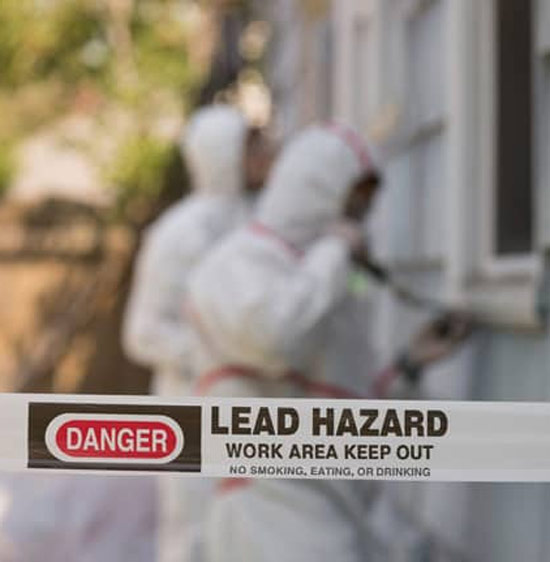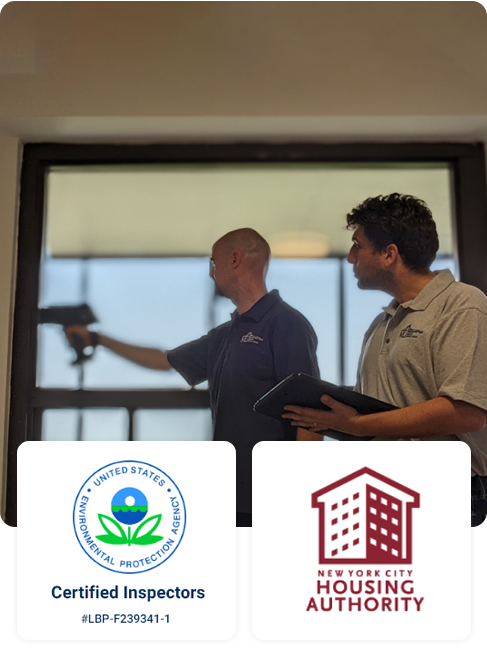DOH & HPD Lead Violation Removal NYC-- Professional Providers for Conformity
DOH & HPD Lead Violation Removal NYC-- Professional Providers for Conformity
Blog Article
Step-by-Step Refine for Effective Lead Offense Remediation
Resolving lead infractions requires a careful and structured method to ensure both security and regulatory conformity. The journey begins with the exact discovery and evaluation of contamination sources, utilizing sophisticated analysis devices. Following this, adherence to federal and state regulations is paramount to creating an efficient remediation strategy. Such a plan needs to detail the particular approaches and timelines for action. The actual remediation needs experienced workers to carry out these plans while purely complying with safety methods. Yet what occurs after the remediation is completed? The response hinges on recognizing the essential post-remediation techniques that make certain long-lasting safety and security and area health.

Detection and Assessment
Detection and assessment are critical steps in the removal of lead infractions. To make certain an effective removal process, it is vital to carry out a complete examination of the atmosphere where possible lead direct exposure exists. The first phase of discovery entails identifying sources of lead contamination, which can be located in paint, pipes, dirt, and dirt. Using sophisticated analysis devices such as X-ray fluorescence (XRF) analyzers and atomic absorption spectroscopy (AAS) can offer exact dimensions of lead concentrations.
This includes assessing the extent and extent of contamination, as well as recognizing populaces at risk, particularly youngsters and expecting ladies. The gathered information must be carefully documented to sustain the advancement of an effective removal technique.
Additionally, it is vital to prioritize locations with the greatest levels of contamination and those that posture the best health and wellness threats. Efficient communication with stakeholders, consisting of building owners, residents, and public health and wellness officials, is critical for making sure that all parties are educated about the searchings for and the subsequent actions needed for remediation. This first detection and analysis phase prepares for a successful lead offense remediation process.

Lawful and Regulatory Conformity
Navigating the landscape of lawful and governing compliance is a crucial aspect of successful lead offense remediation. Compliance makes sure not only the safety and security of affected populations but likewise the credibility and legal standing of the organization liable for removal.
This entails precise documentation of all remediation tasks to show conformity. Failure to adhere to these policies can result in extreme penalties, consisting of hefty fines, lawful action, and reputational damages.
Involving legal specialists focused on environmental law can assist in browsing these complexities. Regular training and certification for all employees involved in the removal procedure are additionally obligatory to guarantee adherence to safety and regulatory requirements. By prioritizing lawful and regulative compliance, companies can efficiently alleviate dangers and attain a successful remediation result.
Planning the Removal
Efficiently intending the removal of lead infractions begins with an extensive analysis of the contaminated website. This data-driven method makes sure that remediation efforts are properly targeted and reliable.
As soon as the contamination is mapped, a risk evaluation must be performed to evaluate potential health and wellness threats to humans and the environment. Lead Violation Removal in NYC. This evaluation must take into consideration variables such as exposure pathways, population vulnerability, read the article and environmental effects. The understandings collected will certainly develop the basis for picking an ideal removal approach
Subsequently, setting clear, achievable objectives for the removal project is crucial. These purposes need to align with regulatory standards and stakeholder assumptions to ensure compliance and area approval. Creating a thorough removal strategy that details techniques, timelines, and resource allotment will facilitate an organized strategy to the clean-up process.
Furthermore, it is necessary to engage with stakeholders early and keep clear communication throughout the planning stage. This consists of notifying regional areas, getting needed permits, and collaborating with regulatory agencies to make certain all legal and step-by-step needs are fulfilled. A well-crafted removal strategy not only resolves the contamination successfully however also constructs depend on and collaboration among all events included.
Executing the Removal
With a well-structured remediation strategy in position, the emphasis basics moves to the real execution of the removal activities. This stage includes mobilizing the needed resources, consisting of competent employees, specific tools, and top notch materials. Begin by clearly marking functions and duties to guarantee liability and seamless sychronisation amongst employee.
The initial action in implementation is to secure the website. This consists of setting up control locations to avoid lead dust and particles from spreading, along with employing air filtering systems to keep air quality. Next, continue with the elimination of lead-based materials. Use approaches such as damp scraping, chemical stripping, or encapsulation, have a peek here relying on the severity and location of the contamination. It is necessary to abide by security procedures, consisting of making use of personal protective devices (PPE) and appropriate disposal of unsafe products.
Throughout the remediation process, conduct regular assessments and air top quality checking to make certain conformity with governing standards. Effective interaction with stakeholders, consisting of homeowner and residents, is vital to maintain them notified of development and any unexpected developments. By meticulously following these steps, the remediation activities can be implemented successfully and properly, eventually mitigating lead dangers.
Post-Remediation Techniques
Post-remediation techniques play a crucial role in making certain the lasting success of lead infraction remediation efforts. These approaches include ongoing monitoring, upkeep, and neighborhood education to protect against future lead direct exposure and guarantee a safe setting.
First, routine monitoring is crucial. This includes periodic screening of the previously influenced areas to ensure that lead degrees remain within secure limits. Property proprietors ought to establish a timetable for these tests, preferably in partnership with qualified environmental specialists.

Third, educating the neighborhood plays an essential role in maintaining the advantages of removal. Residents and property supervisors should be notified about the threats of lead direct exposure and the ideal methods for keeping a lead-safe atmosphere. Workshops, educational pamphlets, and area meetings can be reliable devices for distributing this details.
Conclusion
Effective lead infraction remediation needs a detailed, organized strategy incorporating discovery and analysis of contamination, adherence to lawful and regulative requirements, careful preparation, and efficient execution of remediation efforts. This methodical procedure emphasizes the relevance of thoroughness and alertness in resolving and minimizing lead contamination.
Report this page